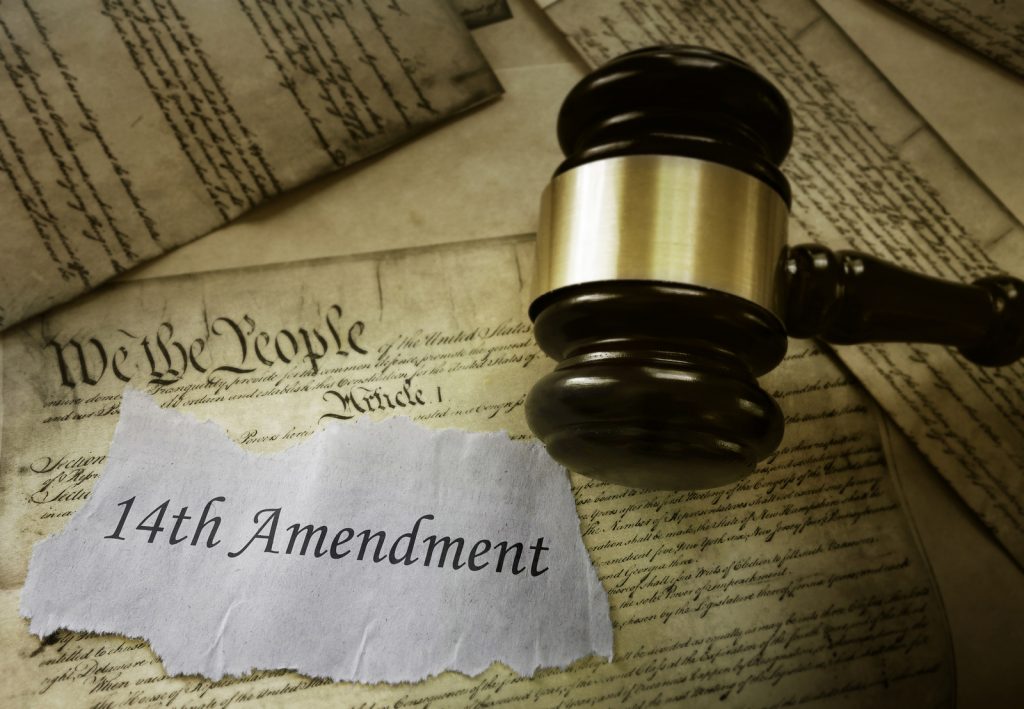I don’t want to write this post. I’ve tried to avoid it for weeks. I wish the issue described here would go away and stop bothering me. You probably won’t like it. The solutions, once we even agree that there is actually a real problem, will be complicated. I describe one possible solution, but you’ll probably find much to criticize about it. Hopefully you’ll have a better one.
The issue is racial segregation and economic theft created by explicit federal and state laws. Not just by prejudice, history, ignorance, circumstance, personal preference, religion or hate. But by the laws of the land, enforced over many decades across the entire nation. Not just in the former Confederate South, but in New England, California, Chicago, Detroit and everywhere in between.
I know that sounds like an inflammatory statement from a progressive radical. I wish it were not true. But it is.
I believe that America is the land of equal opportunity. But I’ve recently learned that for the hundred years from the end of the Civil War to the 1970’s, equal opportunity did not exist if you were black and wanted to buy a home, because the Federal Government denied you that opportunity by law.

Last month I read The Color of Law by Richard Rothstein. The book is a very detailed account of the history of racial segregation in housing. There are 67 pages of single-spaced Notes and Bibliography. The examples are many, taken from every part of our country. If this one source is not sufficient, simply type “housing segregation” into a search engine, and numerous other studies will appear.
They unfortunately all tell the same story.
Racial segregation in housing was not merely a project of southerners in the former slaveholding Confederacy. It was a nationwide project of the federal government in the twentieth century, designed and implemented by its most liberal leaders. Our system of official segregation was not the result of a single law that consigned African Americans to designated neighborhoods. Rather, scores of racially explicit laws, regulations and government practices combined to create a nationwide system of urban ghettos, surrounded by white suburbs. Private discrimination played a role, but it would have been considerably less effective had it not been embraced and reinforced by government.
Half a century ago, the truth of de jure segregation was well known, but since then we have suppressed our historical memory and soothed ourselves into believing that it all happened by accident, or by misguided private prejudice. Popularized by Supreme Court majorities from the 1970s to the present, the de facto segregation myth has now been adopted by conventional opinion, liberal and conservative alike. (p.xii)
Government-created and enforced residential segregation happened in many ways. Without trying to cover every detail in Rothstein’s book, here are some examples:
1. The FHA, and later the VA, had explicit appraisal rules which required that for home loans to be insured by the government, they had to be in racially segregated areas. The FHA’s Underwriting Manual stated “If a neighborhood is to retain stability, it is necessary that the properties shall continue to be occupied by the same social and racial classes. A change in social or racial occupancy generally leads to instability and a reduction in values….Mortgages on properties protected against such unfavorable influences, to the extent such protection is possible, will obtain a higher rating.” (p.65

The FHA was particularly concerned with preventing school desegregation. Its manual warned that if children “are compelled to attend school where a majority or a considerable number of the pupils represent a far lower level of society or an incompatible racial element, the neighborhood under consideration will prove far less stable and desirable than if this condition did not exist,” and mortgage lending in such neighborhoods would be risky. (p.65-66)

Without government loan insurance, a bank would not or could not provide the self-amortizing 25 year home loan which became the vehicle for millions of Americans to buy their own homes in the decades following World War II, the general first step to wealth creation which continues to play out today. In 1946 my father, a veteran with a college degree but no wealth of his own, paid $10,000 for a home in Decatur, a suburb of Atlanta, with $100 down. Nine years later we moved to a larger home on a larger lot. A returning African American veteran could not have done what my father did, only because of the color of his skin.
African Americans were not just excluded from this opportunity on an individual basis. As the suburbs grew, developers and their banks went to the FHA to pre-approve entire to-be-built subdivisions, and the government insurance program required them to include covenants that no homes could be sold or rented to African Americans.

In thousands of communities FHA policy was the same, with very few exceptions: no guarantees for mortgages to African Americans, or to whites who might lease to African Americans, regardless of the applicants’ credit worthiness. (p.67)
2. As part of President Roosevelt’s New Deal, the Public Works Administration (PWA) began building public housing in 1933. It was “mostly for working and lower middle class white families. It was not heavily subsidized, and tenants paid the full cost of operations with their rents…Its original purpose was to give shelter to those who could afford decent housing but couldn’t find it because none was available.” (p.18-19)
The PWA’s projects were always segregated, either by project or within projects. Techwood Homes in Atlanta, the first PWA project in the nation, opened in 1935 with 604 units for white families only on land which had housed 1,600 racially integrated families, one third of whom were African American. As a happier epilogue to Rothstein’s narrative, my friend Egbert Perry, his company The Integral Group, and the Atlanta Housing Authority demolished Techwood Homes in 1996 and developed Centennial Place, a true mixed-income, integrated neighborhood of 738 townhouses, with a new school, YMCA, shopping, etc. hIt has become a model for similar mixed-income developments across the nation.
“Across the Northeast and the Midwest, the PWA imposed segregation on integrated communities.” (p. 22) Because the projects were strictly segregated, as white families were encouraged to move to the suburbs with government subsidized mortgage loans, vacancies developed in white only public housing projects, which were then filled with African Americans, and re-segregated. “African Americans became more removed from mainstream than ever, packed into high rise ghettos where community life was impossible, where access to jobs and social services was more difficult, and where supervision of adolescents and even a semblance of community policing was impractical.” (p.31-32)
What began in the 1930s as low rise, affordable housing for white families wound up, because of enforced segregation and white upward mobility, as the stigmatized racial ghettos of the 1970s and beyond.
3. Where local restrictive deed covenants, zoning restrictions, and homeowner associations sought to make segregated housing even more explicit than FHA or VA regulations, these efforts could only be successful if they were enforced by the power of the state to rule on their legality and to enforce their acceptance.
“Throughout the nation, courts ordered African Americans evicted from homes they had purchased…In Los Angeles in a 1947 case, an African American man was jailed for refusing to move out of a house he’d purchased in violation of a covenant.” (p.81)
“Racial covenants’ power depended upon the collaboration of the judicial system and as such violated the Fourteenth Amendment, which prohibits state governments from participating in segregation.” (p.85)

4. Along with “Urban Renewal” and “Slum Clearance,” the construction of the Interstate Highway System gave local planners, backed with federal funds, the ability to further separate or destroy African-American communities. “In 1956, the Florida State Road Department routed I-95 to do what Miami’s unconstitutional zoning ordinance had intended but failed to accomplish two decades earlier: clear African Americans from an area adjacent to downtown…When the highway was eventually completed in the mid-1960’s, it had reduced a community of 40,000 African Americans to 8,000.” (p.129)
I don’t like Rothstein’s book, or the other studies, because they force me to confront something I’d rather ignore: through much of the twentieth century our federal government and most state governments systematically and explicitly used their legal, regulatory and policing power to deny African Americans their right to fair and equal treatment in housing under our Constitution. The resulting racial segregation in housing and in schools, with all of its negative consequences for families and individuals, was in part created by federal policy, not just by circumstance or accident. Our government helped enforce apartheid just as clearly as did the government in South Africa, though we were better at disguising the methods for doing so.
If you are an African American and find it sadly amusing that an old white guy like me has suddenly “discovered” that racial segregation existed and exists now in the U.S., I have failed to make my point. I am not naive. I certainly understand that racial prejudice and segregation existed and were wrong. In tiny personal ways my family and I have pushed back against it. The difference with this new information is that throughout my adult life the federal government has been considered the key force to overturn prejudice and segregation, from the Brown vs. Board of Education Supreme Court ruling (1954) through the Civil Rights Act (1964), the Fair Housing Act (1968), and many more. What I did not realize is that much of that action was needed because the federal government itself had helped create the segregation it was then fighting. And probably too late to have much effect, at least on housing, which largely determines neighborhood characteristics, school districts, and much more.

As a conservative Christian it particularly angers me that African Americans could “play by the rules”, embrace the American Dream, work hard, save, but still be denied by law the equal opportunity to buy a home and to live where they wanted to, not where they were forced to live by government red lining.
What, if anything, is to be done? Rothstein makes the point that so long as we maintain our suppressed memory and believe that housing segregation occurred without any government involvement, then there is no reason to even consider any type of remedy. That was my position until now: it just happened, so there’s no reason for blame or for remedies.

But if the federal government helped create this unfair treatment, does our nation have a responsibility to provide a remedy to those whose rights were violated? The government cannot take your property without paying compensation. If you are unfairly incarcerated by the government, you receive compensation. If you cannot buy a home because the government denies loans to anyone with your skin color, should you receive compensation?
Rothstein writes: “The core argument of this book is that African Americans were unconstitutionally denied the means and the right to integration in middle-class neighborhoods, and because this denial was state-sponsored, the nation is obligated to remedy it.” (p.xiv) Or see a similar argument forcefully advanced by Ta-Nehsi Coates in his Atlantic article, “The Case for Reparations.”
And the even larger tragedy is that we have all been harmed by these government policies. The new house that my father bought in 1946 was not taken directly from an African-American. Tragically, that second home was simply never built. We suffer as a nation today because of all the wealth creation that could have happened, if we had all been treated equally.

And think of the cost of all the Great Society programs of the 1960’s, like the never-ending War on Poverty, which has cost over $20 trillion and has led to intergenerational dependence instead of intergenerational wealth creation. What if African Americans had been allowed and encouraged to own homes and to move to new jobs in the suburbs, as whites were? I imagine that there would still be injustices and the need for some of these federal programs; but with more stable and thriving integrated communities, or even predominantly black home-owning communities (if they resulted from genuine personal choice), the remedial federal programs, with their devastating impact on families, would have been less.
I do not imply here that I am somehow a victim of racial segregation. It is African Americans who suffered and whose families continue to suffer as a direct result of unconstitutional federal policies. My point is that as a nation we are all poorer and worse off than we would have been if the law had not been used to discriminate against one group of citizens, creating less wealth and less stability for all of us.
Again I have to ask, what is to be done? It is complicated, and I doubt that there is any one perfect fix to the harm that has been done. Integrating a restaurant or even a school is relatively simple compared to making up for decades of lost opportunities.
The power of grace in my Christian faith tells me that there should be a relational side to the solution, going beyond pure financial considerations to actual reconciliation, person to person. I realize that this aspect will either be irrelevant or uncomfortable for many, so it should never be mandatory. But a process of including voluntary reconciliation between individuals and families could be included.
Focusing on the financial side, there will of course be no one solution that fits everyone, on either side of the equation. To me the key financial issue is the exclusion of African Americans from the wealth creation process that took place after World War II, centered on home ownership.

Rothstein points out: Median white family income is now about $60,000, while median black family income is about $37,000—about 60% as much. You might expect that the ratio of black to white household wealth would be similar. But median white household wealth (assets minus liabilities) is about $134,000, while median black household wealth is about $11,000—less than 10 percent as much. Not all of this enormous difference is attributable to the government’s racial housing policy, but a good portion of it certainly is.
Equity that families have in their homes is the main source of wealth for middle-class Americans. African American families today, whose parents and grandparents were denied participation in the equity-accumulating boom of the 1950s and 1960s, have great difficulty catching up now. (p.184-185)
As I mentioned, the issue for me is not so much that my family has wealth taken from others, but that other families were denied the opportunity to participate in the wealth creation process. How to restore that wealth, or a large portion of it, while not blaming me personally for the problem, any more than I should be blamed when the state incorrectly incarcerates an innocent person? And how to redress the problem without just giving money away impersonally, which could lead to more problems in the future?
And of course many people, both white and black, will not want to participate in any sort of reconciliation program, for their own personal reasons.
In my mind a remedy would focus on home ownership and would involve personal connections whenever appropriate and possible. So as a first try I propose that non-African Americans and African Americans could register for a reconciliation program as donors and as recipients. Donors could designate payments to recipients up to some annual amount per recipient, say $5,000. The federal government would then match the payment times four. So a $2,000 personal commitment from my family to a black family would become $10,000. A recipient could receive grants from several different donors, up to an annual personal cap, to discourage abuse.

The recipient would receive vouchers which could only be used for equity in a home, condominium, or land–either to purchase a new property or to pay down the debt on a property already owned, thereby increasing the equity. The vouchers could be given to other family members, or inherited, but all would be tracked, again to reduce any possible abuse.
In order to make the process more personal and relational, a white family would be able to designate one or more registered African American families to receive its payment(s), which could be spread out across several years.
Other donors without a personal connection of their own could give to a central registry, which would then give vouchers to registered African American families; if both parties agreed, they could be connected. Or remain anonymous.
I said this solution is a first try on my part. You can probably find a lot wrong with it. I hope you will offer an improved version. Or perhaps you believe that the status quo is fine–that we’ve already done enough, or too much. Or it’s just history, and we should let it lie. At this point the key issue is not so much the details of a remediation program, but the foundational agreement that such a program is a necessary step toward national healing in this specific area. Let me know what you think.

Finally, if there are any progressive liberals reading this, there is an important message for you as well. Before deciding that the answer to any problem must involve the government, be sure that no other alternative exists. Once you give government, with its taxing and police power, the role of fixing something, if it goes wrong, it will go very wrong, with little chance of timely remedy. Once the government could decide whose loan would be insured, when it then made bad decisions, who could change the outcome? To drill deeper into this aspect of the issue, see Carl Paulus’ article on Rothstein’s book in The American Conservative.
So there are important lessons for all of us here. I admit that I have been remiss in thinking about it, much less in helping to solve it. And I wish I didn’t have to deal with it, but I do.
Conservatives like me have a saying that “Government should exist to insure equal opportunities, not equal outcomes.” Here, fellow conservatives, is a clear case where the government worked diligently to insure unequal opportunities. I challenge us not to ignore this wrong, but to help redress it.


Bravo Parker… A lot of outrage here for the described government policies that resulted in societal segregation in the housing segment of society – outrage apparently justified by the specific examples cited and the outcomes. A clear demonstration of governmental ineptitude when engaging in social engineering.
The same disastrous performance is demonstrated by the The Fair Housing Act (also known as the Civil Rights Act) of 1968) prohibiting “redlining” in lending. An apparent governmental attempt to “reverse” the neighborhood racial character, the law forces financial institutions to lend on properties located in neighborhoods objectively judged as bad risks. Forcing lending to unqualified borrowers in sub-standard neighborhoods, this government policy led to billions of dollars of defaulted loans, leading to the catastrophic failure of the savings and loan industry… and finally to the FIRREA law of 1989 that blamed the failures on local appraisers and bailed out selected banks and bondholders with the RTC.
Good job proposing something to correct the past. But your message at the end of the blog to stop further such violations of equal opportunity in the future is the most relevant for me. “Government should exist to insure equal opportunities, not equal outcomes.” I want to harden and emphasize your statement that “Once you give government,…the role of fixing something,…it will go very wrong, with little chance of timely remedy.
I look forward to future blogs that will further the objective of limiting government, and the rights we delegate to it, to those ensuring equal opportunity, not equal outcomes for anyone.
Gere, thank you for your Comment and input. On the last point about the government, I tell our kids that power always corrupts, sooner or later. So our Founders got it right–unlike the European notion that an elite group could so reform themselves to become almost perfect rulers, our Fathers knew from their faith that we are all fallen, and perfection would never happen. So, instead, they relied upon us all pursuing our own self-interests, but with structural Checks and Balances, the Rule of Law under a Constitution, and a true Free Press to bring all actions to light. Without any one of those three, when the power gets corrupted, there is little that the rest of us can do. Thank you again.
Thanks for this info and it just corroborates Dinesh D’Souza’s info in his book and video on “Hillary’s America” and how there has been continued governmental influence over racial inequality for years. Personally, I happen to be married to a black man (for 33 years now) and have personally seen housing discrimination in my own life. If I went to look at an apartment alone, I would be welcomed with open arms and when could I sign a lease, but as soon as I would bring him along to see the place, then all of a sudden the apartment had been rented while we were looking at it together. It was quite blatant!!! So I finally found a place I liked, we drove by so he could at least see where it was, and I filled out the application and put a deposit down before they met him. And after we had the most beautiful children, strangers would come up to me in a mall and say how much they admired me for adopting an “underprivileged child”. I’ve always felt that we need to see people for who they are and not the outward appearance and as nurse, I know for a fact that we all bleed red. It’s so sad to feel like such an outsider in a world where we should all just belong and be kind.
Laura, thank you for this moving, personal response from your first hand experience. Every other human being is equally my brother or sister, not because the government tells me so, but because God created all of us, and He is our common Father. All the best.
Congratulations, you broke the code. I have long recognized that official government policy, fostered by Democrats and Socialists had as it main point continued degradation of Black folks, sewing discord, and attempting to create anarchy. So it was under FDR, so it is under Obama. Now, for the first time ever, record employment has been created for both Blacks and Hispanics. Democrats despise that, since it enables Blacks and Hispanics to break the bonds of the “government plantation”. Many remedies will be proposed. Some will work. Some will not. But, the most precious four-letter word in the Secular World outside of love is jobs. CCIMS have always been jobs creators. We know that all too well, because we are schooled and do school others in basic capitalism. Under Trump, we have a glimpse now of what it possible when the U.S. Department of Paperwork (rules and regulations) and other impediments to enabling Blacks and Hispanics to break off the Government Plantation. Dems have fostered government dependency and government solutions to everything, because it keeps them in control. Political control is their God. Government Power is what they worship. Thus it has been so, so it will continue to be for Dems. Dems work to continue unequal opportunities and degradation. All this while funding Planned Parenthood to engage in a “gentle genocide” against Blacks at the same time. I applaud your realizations. Many approaches need to be tried.